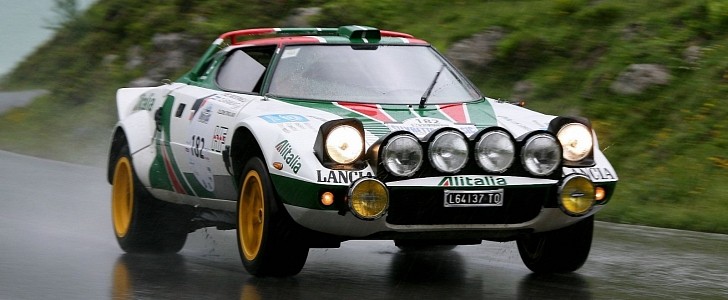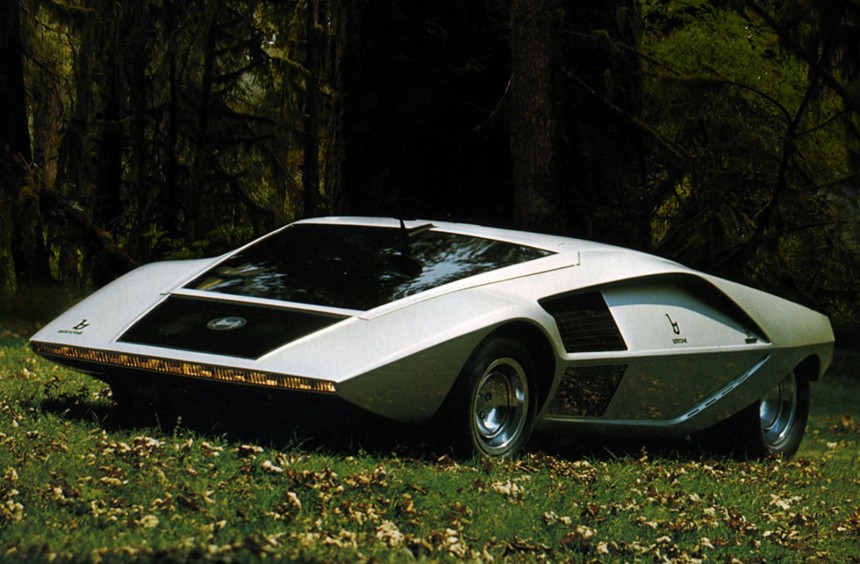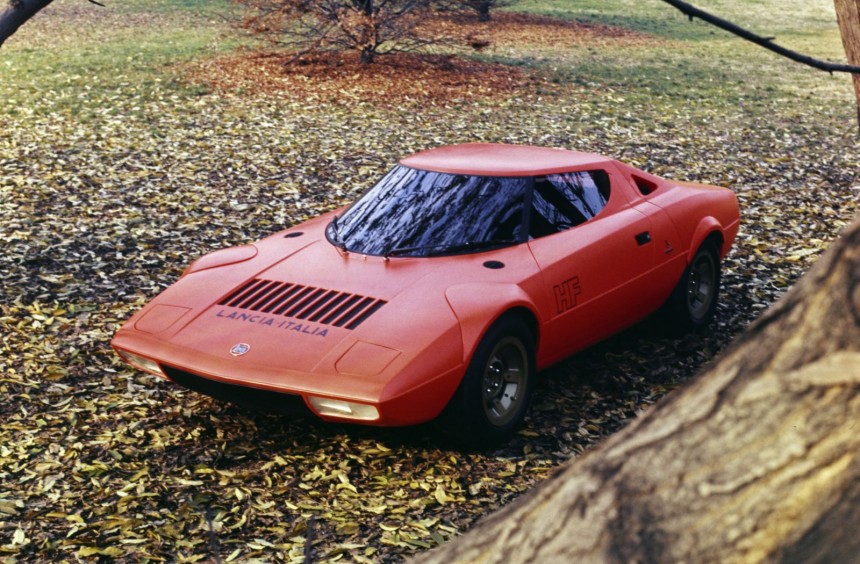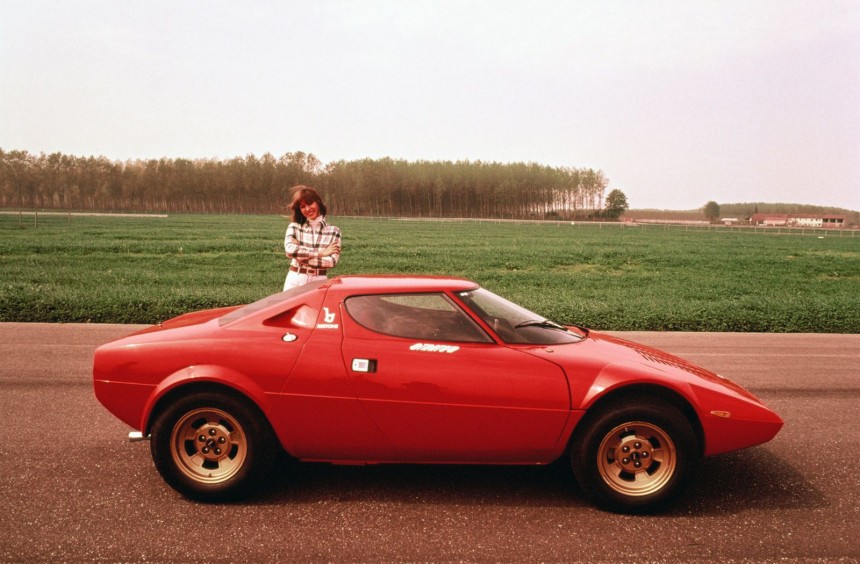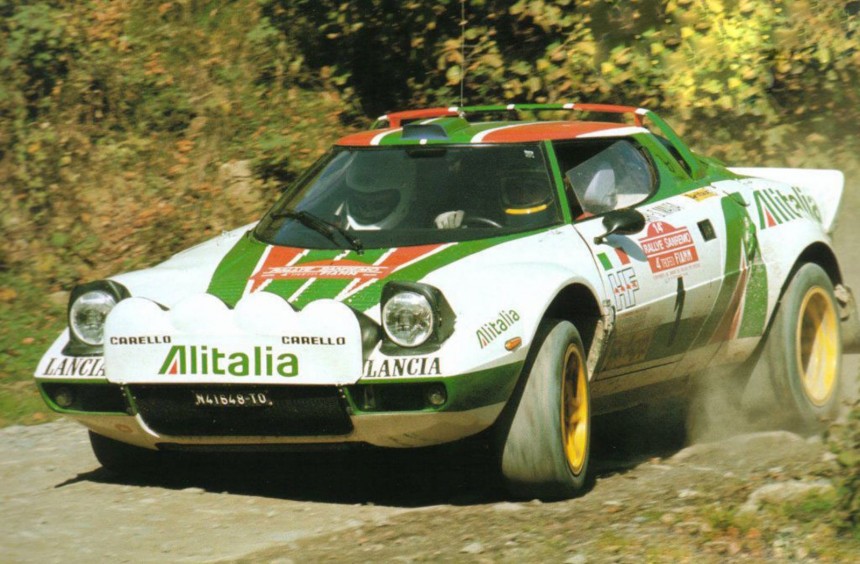Almost half of a decade has passed since Lancia and Bertone created one of the most iconic cars of all time, the Lancia Stratos. It started as a mind-blowing concept that quickly morphed into a unique homologation special and a hugely successful rally car.
In the early 1970s, the Turin-based carmaker was looking to build a successor for the venerable Fulvia, a sedan turned coupe and ultimately motorsport icon. Legend has it that Guiseppe “Nuccio” Bertone got wind of this plan, so he instructed his team to create a futuristic yet functional show car that would persuade Lancia to abandon its longstanding collaboration with rivals Pininfarina for this project.
They took a Fulvia Coupé that belonged to one of Nuccio‘s closest friends, dismantled it, modified the chassis, moved the engine in a midship position, and created one of the most radical concepts of the era, the Stratos Zero.
In 1970, Bertone personally drove it to Lancia’s headquarters, passing underneath the main barrier, much to the amazement of those fortunate enough to be around. The management loved the spectacular vehicle and, after some debate, decided to commission the coachbuilder to create Lancia's latest model.
While it looked more like a car and less like a spaceship, the Stratos HF (High Fidelity) prototype was still heavily influenced by the Zero and was nothing like the sports cars of the era. It was designed by Marcello Gandini, the man behind the timeless Lamborghini Miura and upcoming Countach.
Small, wide, and powered by a mid-mounted Ferrari Dino V6, the fluorescent, red-painted marvel was first shown to the public at the 1971 Turin Motor Show, and as you would expect, the public was ecstatic.
The car was built with rallying in mind, with legendary engineer Nicola Materazzi in charge of tweaking the chassis, steering, suspension, and engine components. It was feverously tested by rally driver Sandro Munari and participated in several races where Group 5 prototypes were allowed during 1972 and 1973.
To homologate the car for the 1974 World Rally Championship, a minimum of 500 road cars had to be constructed. After convincing Enzo Ferrari to let Lancia use the 2.4 -liter Dino six-cylinder, production began in 1973.
The roadgoing Stratos HF Stradale was nearly identical to its motorsport-oriented sibling. It had big tires, a spartan interior developed with weight-saving in mid, and it featured a detuned version of the engine that produced 188 hp and 166 lb-ft (226 Nm). That was good enough to launch it to 62 mph (100 kph) from a standstill in 6.8 seconds.
It was built for five years in approximately 492 units, enough to comply with the updated 1976 regulations stating that 400 production versions were required to be constructed.
In the meantime, the lighter rally variant hit the gravel at the Rally Sanremo in October 1974, winning the event with ease. Driven by Munari, it continued to impress in the next four rounds and helped Lancia secure the title at the end of the season.
The following year, the manufacturer won the first two rallies held at Monte Carlo and Sweden, managed a 2-3 finish in Kenya, and grabbed two more wins in Italy and France. The Stratos was no match for the competition, which included parent company Fiat’s Abarth 124 cars. Lancia was triumphant again at the end of the season, finishing 35 points clear of its hometown rivals.
For 1976, the car everyone was trying to beat became even better. After the opening round at Monte Carlo, Stratos drivers Sandro Munari, Björn Waldegård, and Bernard Darniche finished in the first three positions for an all-Lancia podium. The feat was repeated seven rounds later in Italy, with Raffaele Pinto replacing Darniche in 3rd. Apart from these amazing results, the iconic rally car finished on top on another two occasions and grabbed second- and third-place finishes in Morocco and France. In the end, Lancia secured its third consecutive title, but this time, it finished with almost double the points over Opel, which finished the campaign second.
Unfortunately, after that season, Fiat decided to cut funding for the Stratos program, and along with new regulations that restricted engine power, Lancia could not defend its title. The car continued to be used until the early ‘80s, grabbing its last victory at the 1981 Tour de Corse in France at the hands of longtime privateer Bernard Darniche.
Born out of a wild concept, the Lancia Stratos is considered one of the most innovative rally cars of all time. Many argue that it could have been even more dominant had Fiat continued to provide adequate support.
The Stradale version has become a highly sought-after collector’s item, fetching well over $500,000 on the rare occasions it goes under the hammer.
They took a Fulvia Coupé that belonged to one of Nuccio‘s closest friends, dismantled it, modified the chassis, moved the engine in a midship position, and created one of the most radical concepts of the era, the Stratos Zero.
In 1970, Bertone personally drove it to Lancia’s headquarters, passing underneath the main barrier, much to the amazement of those fortunate enough to be around. The management loved the spectacular vehicle and, after some debate, decided to commission the coachbuilder to create Lancia's latest model.
Small, wide, and powered by a mid-mounted Ferrari Dino V6, the fluorescent, red-painted marvel was first shown to the public at the 1971 Turin Motor Show, and as you would expect, the public was ecstatic.
The car was built with rallying in mind, with legendary engineer Nicola Materazzi in charge of tweaking the chassis, steering, suspension, and engine components. It was feverously tested by rally driver Sandro Munari and participated in several races where Group 5 prototypes were allowed during 1972 and 1973.
The roadgoing Stratos HF Stradale was nearly identical to its motorsport-oriented sibling. It had big tires, a spartan interior developed with weight-saving in mid, and it featured a detuned version of the engine that produced 188 hp and 166 lb-ft (226 Nm). That was good enough to launch it to 62 mph (100 kph) from a standstill in 6.8 seconds.
It was built for five years in approximately 492 units, enough to comply with the updated 1976 regulations stating that 400 production versions were required to be constructed.
The following year, the manufacturer won the first two rallies held at Monte Carlo and Sweden, managed a 2-3 finish in Kenya, and grabbed two more wins in Italy and France. The Stratos was no match for the competition, which included parent company Fiat’s Abarth 124 cars. Lancia was triumphant again at the end of the season, finishing 35 points clear of its hometown rivals.
For 1976, the car everyone was trying to beat became even better. After the opening round at Monte Carlo, Stratos drivers Sandro Munari, Björn Waldegård, and Bernard Darniche finished in the first three positions for an all-Lancia podium. The feat was repeated seven rounds later in Italy, with Raffaele Pinto replacing Darniche in 3rd. Apart from these amazing results, the iconic rally car finished on top on another two occasions and grabbed second- and third-place finishes in Morocco and France. In the end, Lancia secured its third consecutive title, but this time, it finished with almost double the points over Opel, which finished the campaign second.
Born out of a wild concept, the Lancia Stratos is considered one of the most innovative rally cars of all time. Many argue that it could have been even more dominant had Fiat continued to provide adequate support.
The Stradale version has become a highly sought-after collector’s item, fetching well over $500,000 on the rare occasions it goes under the hammer.
